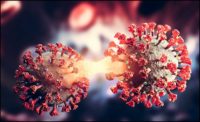In a sense, HVAC engineers are the physicians of the built environment because IAQ and water management determine the growth and transmission of microorganisms. Therefore, it is essential for engineers to understand the basic characteristics of these minuscule beings.
Many people think of “germs” as one big group of tiny (how tiny?) organisms that cause infections. There are, however, several different categories of microorganisms, and within these categories only some cause infections or disease. These are often called pathogens.
The main groups of pathogens that cause illness and are targets of disinfection in buildings are viruses, bacteria, fungi (mold), and parasites such as mites.
Here are some examples of transmission routes of these pathogens.
Direct contact. A person with contaminated hands touches another person or a common surface, thus passing the pathogen along. This route can spread viruses, bacteria, allergens, and parasites.
Indirect contact. Large droplets containing pathogens are expelled by a person sneezing, then settle onto a surface within several feet to be picked up by a second person’s hand. Alternatively, in dry air (less than 40% rh), these large infectious droplets quickly shrink to become tiny “droplet nuclei” which then travel on air currents over extended lengths of time and distance, ultimately causing illness in patients who had no contact with the first sick person. The smaller and lighter the droplet nuclei, the longer it can remain airborne. Viral and bacterial pathogens are often spread in this way.
Airborne transmission. There are few communicable diseases which spread only through the air. One we are familiar with is Tuberculosis, caused by a small bacterium. This route is called obligate airborne transmission.
Viruses and bacteria that have the ability to be spread through the air in droplet nuclei are subcategorized as preferential, or opportunistic airborne microorganisms, depending on their effectiveness of causing disease through tiny aerosols or through other routes.
Diseases from pathogens that are considered preferential airborne microorganisms initiate infection through multiple routes but are commonly transmitted in droplets that land in deep regions of the lungs. Pathogens with opportunistic airborne transmission generally cause disease through other routes such as the gastrointestinal tract, but they can also cause infection through lung deposition and may use fine-particle aerosols as an efficient means of propagating in favorable environments.
Currently, environmental disinfection strategies are based on the idea that direct contact transmission is the most important route of pathogen spread. Consequently, indoor hygiene focuses on disinfection of hands and surfaces. However, this approach will not interrupt the transmission of pathogens through airborne droplet nuclei.
New studies show that the factors in buildings which most strongly influence the survival of airborne infectious droplet nuclei are indoor air rh and temperature. More studies are essential to better understand the impact of IAQ and water management on the prevention of infectious diseases in the built environment.




